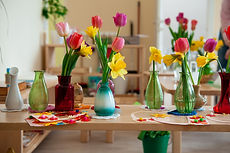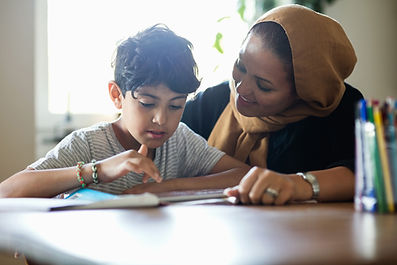The Prepared Environment
"The first aim of the prepared environment is, as far as it is possible, to render the growing child independent of the adult."
-Maria Montessori, The secret of childhood, 1966.

Maria Montessori describes the prepared environment as an environment where everything a child comes into contact with would facilitate and maximize independent learning and exploration. The environment should be calm and well ordered. Montessori, M. (1966). The Secret of Childhood
Six Principles of the Prepared Environment




Freedom
Freedom in the prepared environment allows each student to move about the classroom freely, explore the environment independently, choose whom they want to have social interactions with, and gives freedom from interference of others.
Structure and Order
Children gain knowledge of the world around them through their environment. The classroom should be organized and structured so the child can easily maneuver through it and have a clear understanding of where things are
Beauty.
The classroom should be beautiful, simple, and well-maintained. This makes the classroom inviting to the learner.
Nature
The prepared environment should be filled with works made from natural materials. Living things such as plants and animals should be incorporated into the environment. Children should be given responsibilities of taking care of these living things. It gives them a sense of belonging and encourages responsibility.
Social
Social interactions are encouraged in the prepared environment. Children are free to choose who they work next to or collaborate on works with. The environment should foster opportunities for conflict resolution with objects such as the peace rose to encourage peaceful independent solutions to conflicts.
Intellectual
The prepared environment should provide opportunities for intellectual growth. The materials on the shelves are designed to foster independent, hands-on learning. Each child is encouraged to choose works that are interesting to them and are met where they are by the guide.
The Montessori Guide

"Without a trained directess, the prepared environment would be useless, one might almost say worse than useless." Standing, E., M. (1998). Maria Montessori, Her Life and Work.
A Montessori guide is different than a teacher in a traditional setting. The role of the Montessori guide is to make the classroom come to life. They are what links the child to the environment. The environment has everything needed for the child to be successful, but without the guide, the child would be disconnected from the environment. It is the role of the guide to learn where the child is, what interests they have and connect them with the materials that will foster their learning. This is done only through invitation by the child and should never overshadow a child's desire to learn independently. The goal of the guide is to connect every child with the environment on all points so that they can run the classrooms themselves.